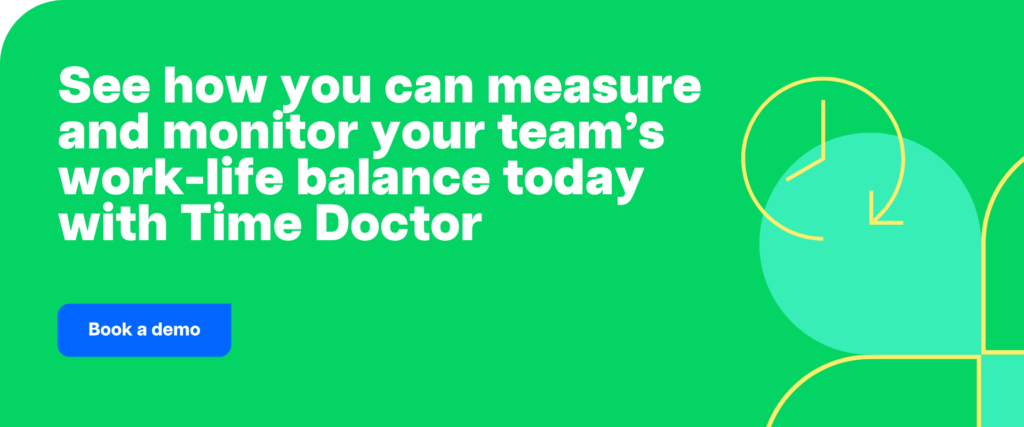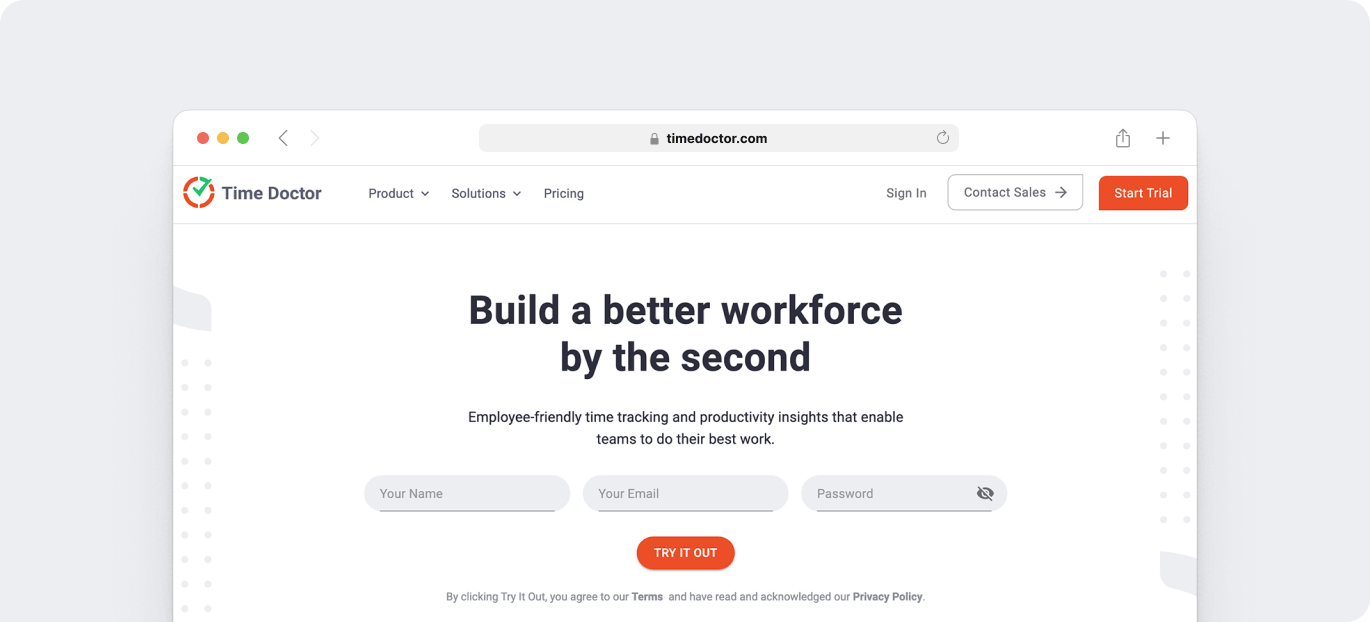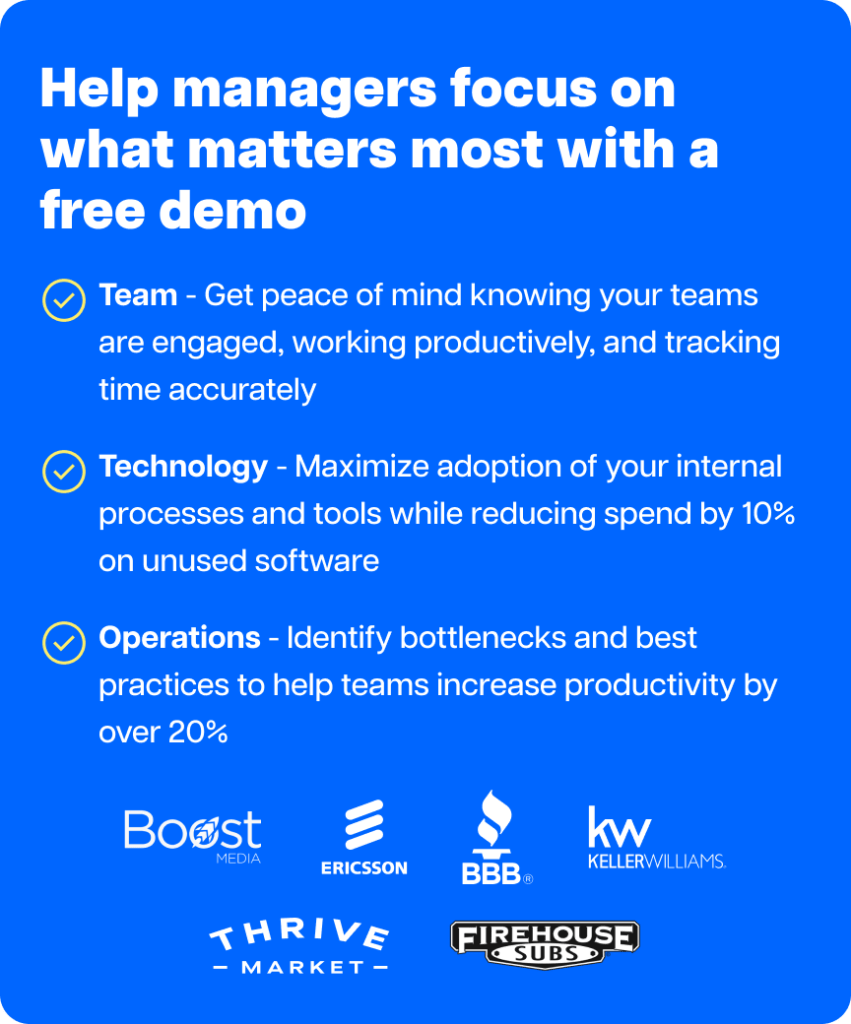It’s an understatement to say the way we work has changed in recent years. What we’re seeing is nothing short of transformation.
The nine-to-five grind is gone. Companies are hiring from a global talent pool, even SMEs. Hybrid work schedules are the rule rather than the exception.
This flexibility has been great for businesses, employees, and managers, but it hasn’t been without its hiccups.
The speed and scale of the transition to remote work surfaced systemic issues that undermine companies’ potential to capitalize on the opportunities.
One of the biggest issues, and the one we’re hoping to help you address in your team, is proximity bias.
We’re not talking about the tendency for employees to buddy up with the person who shares their office pod, although that is worth considering when managing remote employees.
Instead, we’re focusing on managers who favor employees who are physically closer to them.
This form of proximity bias can hurt employee morale, retention, and organizational performance. We’re going to help you avoid that.
Table of Contents
- Understanding proximity bias
- Is the proximity bias picture changing?
- What proximity bias costs companies
- Bridging the gap: How to identify and address proximity bias
- Time Doctor gives managers the visibility to beat proximity bias
Understanding proximity bias
A little over a decade ago, in 2013, around 10% of US employees regularly worked from home. It was still a novel idea at the time, and skepticism was common.
Would employees actually work if they knew their manager couldn’t see them? Maybe they just left their laptop on while they kicked back to watch season 1 of Brooklyn Nine-Nine, which aired that year.
These murmurings caught the ear of a newly minted Associate Professor of Economics at Stanford University, Nick Bloom.
He is now a globally recognized leader in remote work and the William D. Eberle Professor of Economics at Stanford. But that was all still ahead.
Bloom, with his colleagues James Liang, John Roberts and Zhichun Jenny Ying, set out to examine the validity of managers’ concerns about ‘shirking from home.’
To gather data, they ran an experiment involving 249 call center employees. Around half were assigned to work from home (WFH) four days per week, and the other half stayed in the office.
Nothing else changed. “Office and home workers used the same IT equipment, faced the same work order flow from a common central server, and were compensated under the same pay system, which included an element of individual performance pay.”
The study ran for nine months. So, what did Nick and his study co-authors find?
- Productivity was 13% higher in the WFH cohort. Employees took fewer breaks and sick days, and attended more calls per minute.
- Attrition rates were 50% lower in the WFH group. Just 17% of WFH employees quit during the study vs. 35% of in-office workers.
- Satisfaction and engagement were higher in the WHF group. Home workers self-reported higher work satisfaction and had more positive survey responses.
- Promotion rates in the WFH group were 50% lower than in the in-office group. Home workers were half as likely to receive performance-based promotions.
Did you catch the anomaly in these results? The WFH group performed better, were more loyal, and reported higher engagement levels. Yet they were half as likely to receive promotions conditional on performance.
In other words, managers were more likely to promote in-office workers even when they demonstrably underperformed.
This is proximity bias in a nutshell.

Bloom’s study is far from the only evidence, and the effect isn’t contained to those who are reluctant to embrace hybrid work schedules.
In 2021, the Society of Human Resource Management (SHRM) released survey findings that showed 67% of supervisors managing remote employees admitted they viewed them as more replaceable.
Almost two-thirds (62%) of managers believed full-time remote work to be detrimental to employees’ career objectives, and 42% said they “sometimes forget about remote workers when assigning tasks.”
But do employees agree? Sadly, yes. One-third (34%) felt permanent WFH arrangements would limit their career options, and 54% thought it would result in working longer hours.
Proximity bias also creeps into daily behaviors, like sharing information with in-office employees first, or scheduling meetings without considering remote employees’ timezones.
Is the proximity bias picture changing?
Nick Bloom ran another study a decade later in 2023, this time looking at the effect of hybrid work on performance and proximity bias. The study group was 10x larger and software engineers rather than call center workers.
Again, working from home resulted in higher performance (4.4%), though the study notes this result isn’t significant given the large sample size. Again, attrition was lower (33%) among the WFH group, and again, job satisfaction was significantly higher.
Only this time, there was no significant difference in promotions between in-office and home or hybrid workers. (Emphasis on significant, as the data shows a difference, but the authors note it’s not strong enough to draw conclusions).
So, what changed?
Bloom and his co-authors point to two possible reasons for these results:
- Times have changed. The 2023 study was conducted post-pandemic when the number of people working from home had tripled, so the results reflect a general sentiment shift.
- Managers were included. Unlike the first study, around one-third of the cohort were managers (393 vs. 1,219 employees).
In fairness, the managerial group reported lower productivity when working from home and were more likely to work from the office on optional days.
Still, their opinions changed after the study. The baseline sentiment towards managing remote employees “improved substantially and were no longer significantly different from non-managers,” even if managers weren’t keen on working remotely themselves.
Could managers be more willing to embrace hybrid work schedules when they see the evidence for themselves?
The study seems to suggest that’s possible, noting that “[t]he obstacle to implementing hybrid WFH was managers’ concerns that employees would underperform on their days at home” and “personal experience of working from home…leads employees to update on the experience, matching the evidence of a positive society-wide update on WFH productivity after the 2020 pandemic.”
What proximity bias costs companies
Counting the cost of proximity bias is complicated. Not least because the true cost depends on many unknowns.
Would those employees who were overlooked for a promotion have been better managers or worse? Are they more valuable to the company as knowledge workers or team leaders? Do employee engagement levels remain high, or does WFH fatigue set in after a while?
On the other hand, are companies bleeding money (in recruitment and training) simply because they prefer to keep an eye on employees? How much could they save on real estate costs?

We can’t hope to know the answers to these questions. What we can do, however, is look at data and try to tease out a theory.
For example, Bloom’s work found:
- Training a new worker costs ~6 weeks of salary plus recruitment costs (Bloom et al., 2013)
- The company estimated cost savings of $2,000 per year per employee working from home ($1,250 in operational costs and $400 in turnover)
Those are the most important cost figures we could find. On top of these, it’s well-documented that workers who skip the commute and eat lunch at home save significant amounts of money.
But what are they giving up in exchange?
- 29% of remote workers said they would have fewer developmental opportunities
- 51% said they spent between $100 and $400 (USD) outfitting their WFH setup
- 59% said permanently working remotely would offer fewer networking opportunities, and 55% said it would hurt their work relationships
Women were especially reluctant to work from home full-time, according to all three studies. Not because they don’t want the flexibility but because of “concerns over the costs of actively signaling a preference for remote work,” as the 2023 study puts it.
For context, 80% of women surveyed by Ensono believe hybrid work offers equality in job opportunities, and 97% agreed that hybrid or in-person schedules were important for team dynamics.
Let’s face it: nobody likes their manager watching over their shoulder. And “management by walking around” is less common than it used to be, simply by the nature of work changing.
However, if people choose not to work remotely because they believe it will hurt their career opportunities, and managers continue to stoke these fears, it indicates a real and sustained problem with proximity bias.
Bridging the gap: How to identify and address proximity bias
It seems that proximity bias can be boiled down to a three-sided equation.
On one side, the company’s bottom line benefits from remote and hybrid work schedules. On another side, employees prefer working remotely at least some of the time but feel that asking for it means they’ll be overlooked for advancement opportunities. The third side is line managers (team leaders), most of whom want to see people in the office.
Looking at it this way helps to understand that the solution is balance. Mitigating proximity bias is not zero-sum.
With all sides working together, a hybrid work schedule can be successful on all fronts. It can alleviate managers’ concerns, give employees autonomy and flexibility, and optimize the company’s cost strategies.
Here are four strategies to address proximity bias and make managing remote employees work for everyone.
1. Invest in managers
The first line of defense against proximity bias lies in equipping leaders with the confidence and capabilities to manage remote employees. Bloom’s 2023 study (somewhat deliberately) sent managers into hybrid work schedules without training.
That was important for reliable data, but in practice, managers need more support. Organizations must invest in their leaders so that proximity biases are caught early and addressed independently.
For example, that could mean providing training that covers:
- Remote leadership skills like communication, empathy, and the ability to foster a sense of team unity without the benefit of physical presence
- Performance management in remote teams, including how to set clear, measurable goals and how to evaluate performance based on achievements and contributions to the organization’s goals
- Cultural sensitivity and inclusivity to ensure managers are well-equipped to handle diverse teams, respect and integrate different work styles, and value cultural perspectives
2. Set clear goals
Having a clear target to work towards helps team leaders see the measurable differences that effectively destroy proximity bias.
You only need to look at Bloom’s 2023 study for evidence. Even though managers preferred to work in the office more often, their perception of hybrid work schedules shifted from negative to positive in just six months.
Adapting this learning into your organization might look like:
- Shifting the focus from physical presence to measurable outcomes. By establishing clear performance metrics that are objective and quantifiable, managers can evaluate all employees based on their contributions, not their proximity.
- Embracing continuous performance evaluation by ditching the annual review cycle in favor of regular check-ins. Frequent one-on-one meetings and team updates provide opportunities for ongoing feedback, ensure remote workers remain visible (to each other and managers), and offer a platform to recognize individual contributions.
- Using data to challenge assumptions, for example implementing transparent workforce analytics to track where and when people work. Managers will find that the data they use to analyze productivity, enriched with optional screenshots, provides an objective view of performance that becomes invaluable for decision-making.
3. Leverage workplace technology

The gap between the two studies we analyzed earlier, one from 2013 and the follow-up in 2023, is important for two reasons. Firstly, the social and professional sentiment towards remote and hybrid work schedules changed significantly in that time. Secondly, technology has come a long way in 10 years.
The right technology is crucial in bridging the physical distance between remote teams and their managers. However, you could also turn this equation on its head by acknowledging that technology is a central part of our lives.
That means investing in technology is less about changing behavior and more about finding seamless solutions for existing behaviors. Expressed this way, user-friendly technology is mission-critical when managing remote employees.
- Communication and collaboration tools like Slack, Zoom, and Microsoft Teams can help remote workers stay connected with colleagues, share files, and participate in meetings. Interestingly, Bloom’s 2023 study found that the use of communication tools increased across the board, not only for workers on hybrid schedules but also for in-office employees.
- Project management software like Asana or Trello provides a centralized platform for tracking progress, assigning tasks and sharing updates. This is especially important for alleviating managers’ concerns that projects aren’t moving at the right pace when employees work from home.
- Workforce analytics gives managers a comprehensive real-time view of work being done. They can analyze every minute or access trend data that supports decisions affecting hybrid and remote employees. At the same time, employees get tools to self-manage their schedules, fostering a sense of ownership crucial for engagement in remote settings.
There is a risk that managers prone to proximity bias will use technology to micromanage employees. One strategy we have seen to effectively address this is to integrate software so each platform provides context to the other.
For example, Time Doctor integrates with communication tools like Slack and project management software like Asana, creating a holistic, actionable and unbiased view of performance.
4. Foster a culture of inclusion
Building an inclusive culture in a hybrid work environment requires intentional efforts to ensure that all team members feel equally valued, heard and included, regardless of where and when they work.
In other words, the exact opposite of proximity bias.
The challenge is that cultural change, being intangible and indirectly influenced, isn’t something you can import. It comes from the top and the bottom of the organization simultaneously – which often positions team leaders at the crossroads.
A manager’s role is twofold: first, to call their own internal proximity biases to account, and second, to become outspoken champions of inclusion across the organization.
- Challenge leadership to clarify the organizational and strategic benefits of remote and hybrid work schedules.
- Communicate these messages clearly, consistently and transparently, using channels that reach everyone at the same time and measuring progress with good data.
- Show employees the respect you ask of leaders by allowing (even encouraging) them to provide honest feedback based on data-backed arguments.
- Schedule meetings with consideration for time zones, schedules and workloads, ensuring everyone has equal opportunity to prepare and contribute
- Focus on objective, strategic performance metrics when evaluating all employees (i.e., not just face time in the office), and make these metrics clear and measurable so employees have ownership over their success.
Building an inclusive culture in a hybrid work environment takes time, effort and experimentation. If you’re concerned about proximity bias affecting decision-making (yours or others), gently challenge the decisions with data to see if they hold up.
Time Doctor gives managers the visibility to beat proximity bias

Time Doctor provides the tools for organizations to track and analyze work patterns, identify productivity gaps, and improve engagement across remote, hybrid, and in-office teams.
Above all, it gives managers peace of mind.
With complete visibility over how people work – wherever and whenever they work – Time Doctor replaces the blind spots that make managers skeptical with data that makes them confident.
With 60+ integrations and loads of options like screenshots and silent time tracking, Time Doctor levels the playing field and makes proximity bias a thing of the past.Start your 14-day free trial or explore all the features in our employee-friendly workforce analytics platform.

Carlo Borja is the Content Marketing Manager of Time Doctor, a workforce analytics software for distributed teams. He is a remote work advocate, a father and a coffee junkie.


